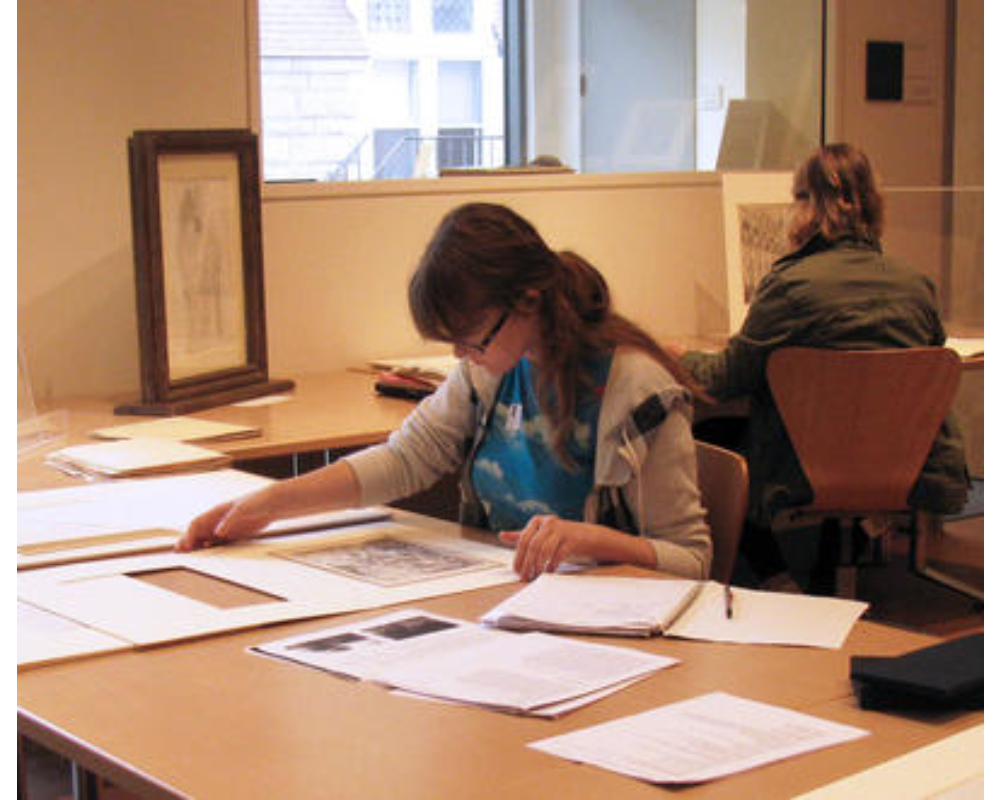
French and Italian Drawings: Renaissance through Romanticism, Part I
Julie Warchol is the 2012–2013 Brown Post-Baccalaureate Curatorial Fellow in the Cunningham Center.
Here at the Smith College Museum of Art, Smith students are given many amazing opportunities to be deeply involved in their collection. This semester, one such chance was given to six students who enrolled in the colloquium French and Italian Drawings: Renaissance through Romanticism, taught by Suzanne Folds McCullagh, who is this year’s Ruth and Clarence Kennedy Professor of Renaissance Studies. A Smith alumna herself (class of 1973), McCullagh is the Anne Vogt Fuller and Marion Titus Searle Chair and Curator of Prints and Drawings at the Art Institute of Chicago. As a specialist in French and Italian prints and drawings from the Renaissance and Baroque, she provides extensive knowledge of drawings in terms of connoisseurship, techniques, conservation, provenance, and collecting, as well as her invaluable experience as a curator at a world-renowned museum.
As an important part of the course, Professor McCullagh and her students developed an installation of French and Italian Drawings from the SCMA collection, which is on view in the Nixon gallery on the second floor of the Museum until December 16. To develop their installation, the class met here in the Cunningham Center for Prints, Drawings, and Photographs, where the students acquired unique hands-on experience of working directly with these drawings. Students learned how to tell more about the history and provenance of these drawings by identifying materials, paper type, watermarks and collectors marks. Using all of this information and much outside research, students wrote their own wall labels for the installation (a selection is shown below). Professor McCullagh and her students’ installation of SCMA’s drawings also creates a dynamic conversation with our exhibition Drawn to Excellence: Renaissance to Romantic Drawings from a Private Collection, on view on the first floor until January 6.
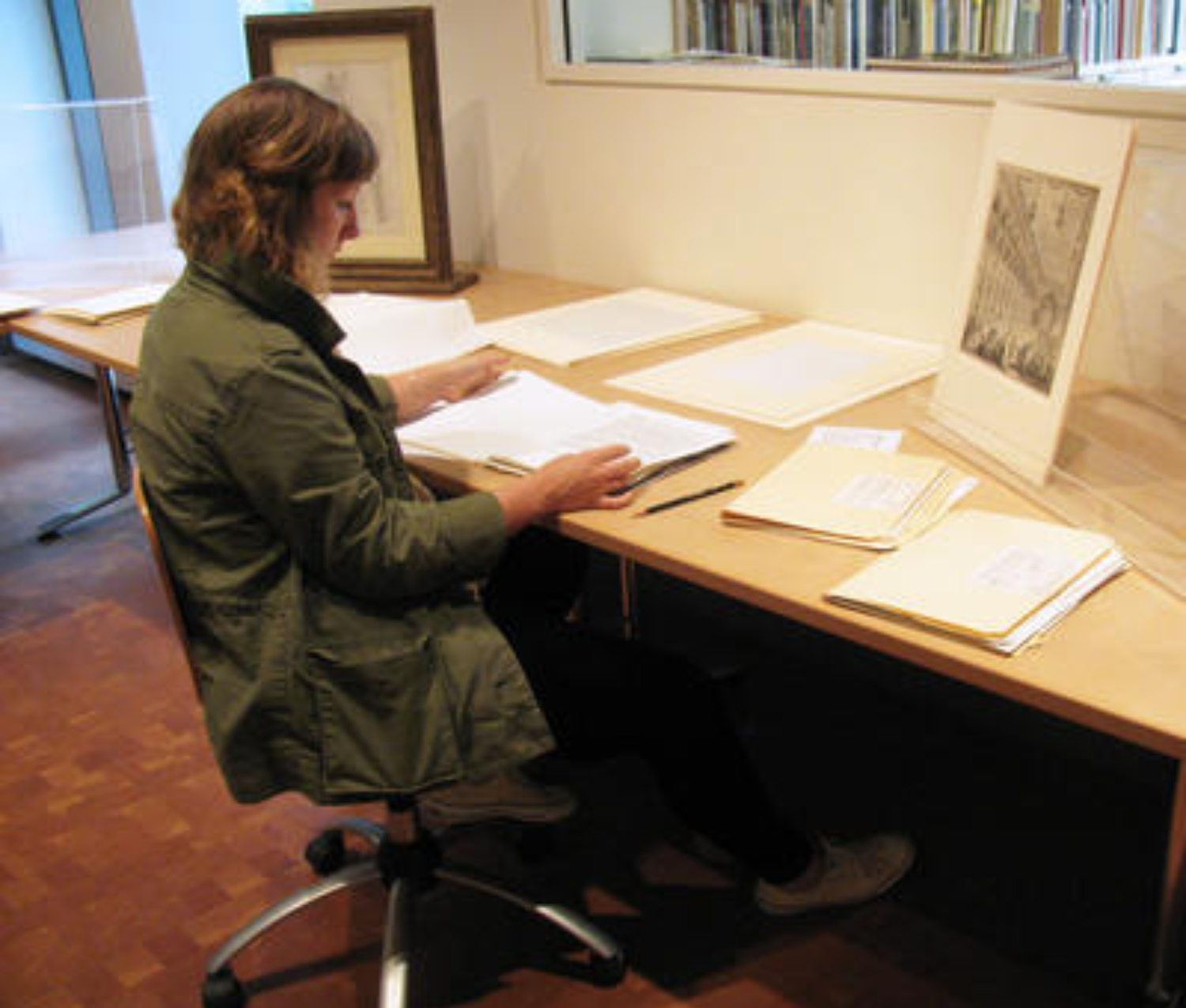
Maddy Barker ’15 researches this Moreau le Jeune drawing with its curatorial file. Photography by Julie Warchol.

Suzanne Folds McCullagh ’73 examines two drawings by Carmontelle. Photography by Julie Warchol.
Labels written by the French and Italian Drawings Class
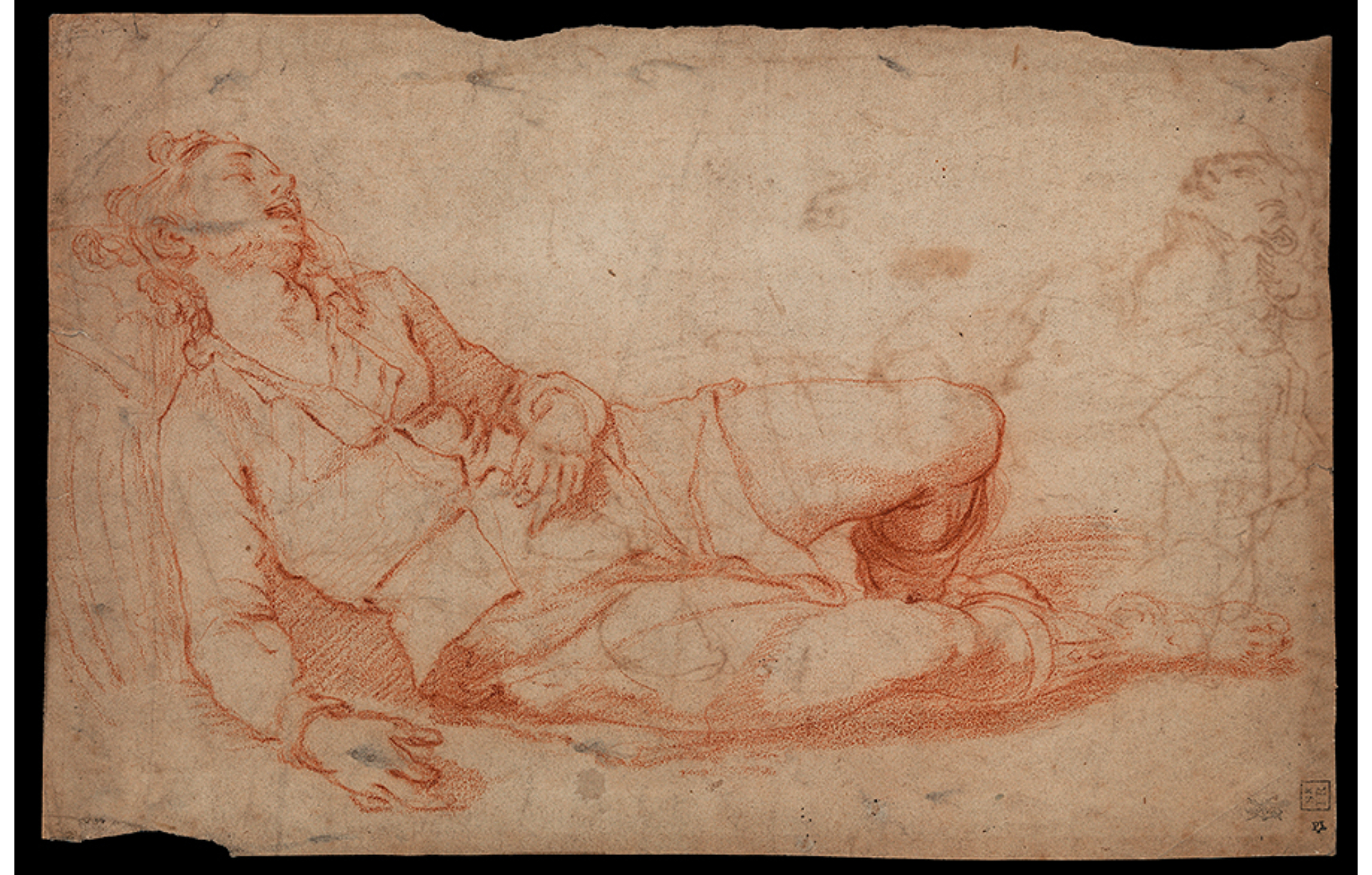
Lodovico Cardi, called il Cigoli. Italian, 1559–1613. Study of Jacob from the painting "Jacob's Dream" (recto); Study for the painting "Jacob's Dream" (verso), n.d. Red chalk on cream laid paper. Purchased with the Ruth and Clarence Kennedy Endowment, the Diane Allen Nixon, class of 1957, Fund, and the Josephine A. Stein, class of 1927, Fund in honor of the class of 1927. Photography by Petegorsky/Gipe. SC 1996.23.
Label written by Suzanne Folds McCullagh (B.A., Smith College ‘73; Ph.D., Harvard University ‘81), the Anne Vogt Fuller and Marion Titus Searle Chair and Curator of Prints and Drawings at the Art Institute of Chicago:
Cigoli was a prolific and expressive draftsman who brought a new naturalism and clarity to his vast corpus of drawings, many of which were preparatory for paintings and espoused Counter Reformation decorum and piety.
This double-sided drawing is comprised of red chalk (recto) and pen and brown ink (verso) studies for The Dream of Jacob, one of his early masterpieces—probably the 1593 version (the painting pictured here) now in the Musée des Beaux-Arts in Nancy.
Discovered mounted in a book in 1996 at an antiquarian book sale in Northampton, the sheet joins an impressive list of at least nine studies for that composition, which Cigoli executed several times in oil. The red chalk study is clearly drawn from a studio model in contemporary dress.
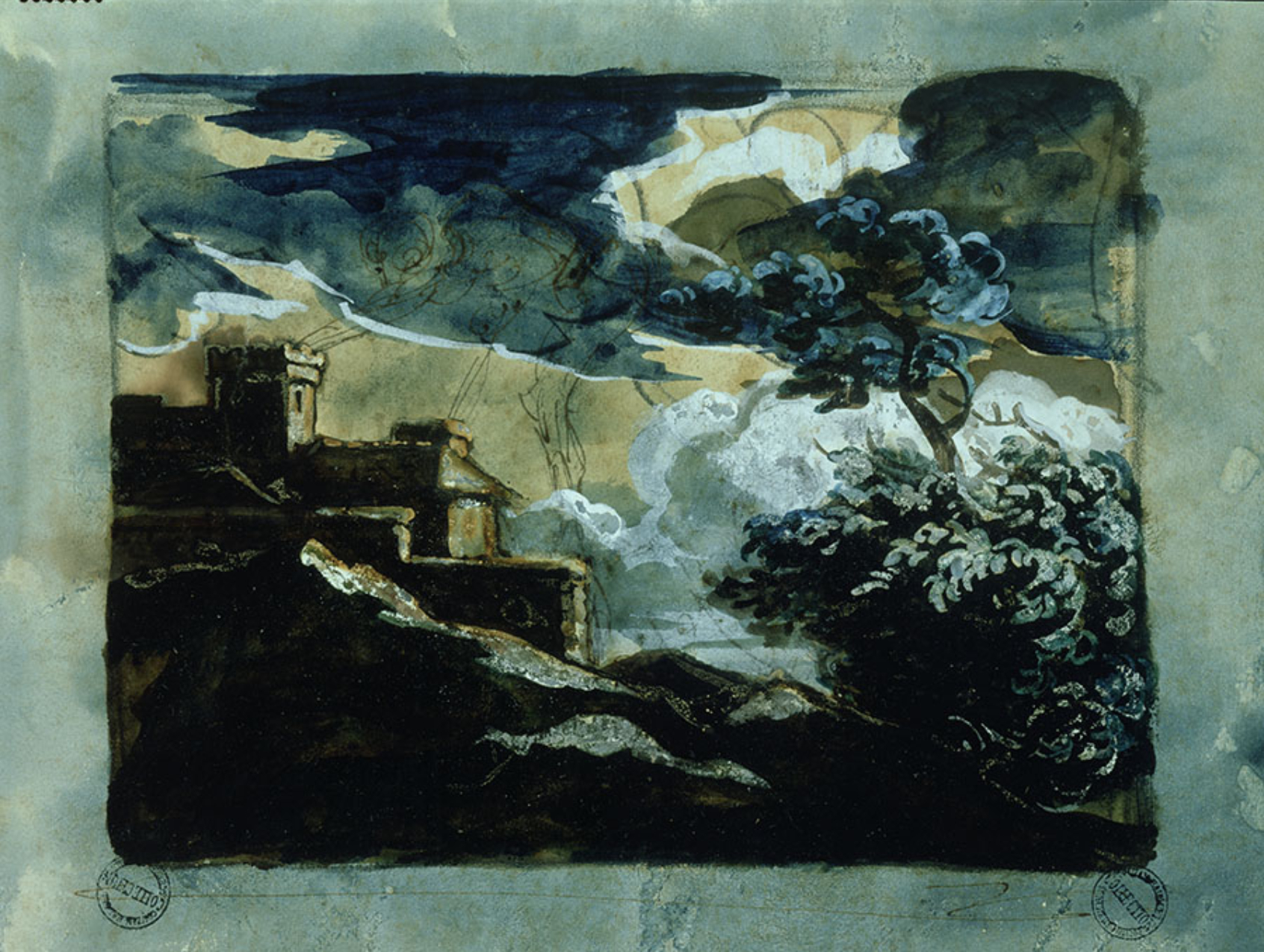
Théodore Géricault. French, 1791–1824. Landscape with Stormy Sky (recto), ca. 1817. Pen and brown (iron gall) ink with brush and ink, watercolor and gouache over graphite on cream wove paper. Purchased. Photography by Petegorsky/Gipe. SC 1960.92.
Label written by Carol Kaminsky:
Géricault’s short life spanned the rise and fall of Napoleon and the shift from rigid Classicism to the intensity of Romanticism. His short apprenticeship in the former style was followed by a period of self-study in Paris copying paintings in the Louvre and two years (1816–17) in Florence and Rome. This brooding landscape, possibly made in Italy, is transformed by sharp contrasts between light and dark. Bands of clouds race across the horizon; a glow emanates from a hidden moon and lights a crenellated tower as smoke rises to merge with the midnight blue of the sky. Landscapes are relatively rare within the artist’s drawn oeuvre, but another landscape by Géricault appears in the exhibition Drawn to Excellence on SCMA’s first floor.
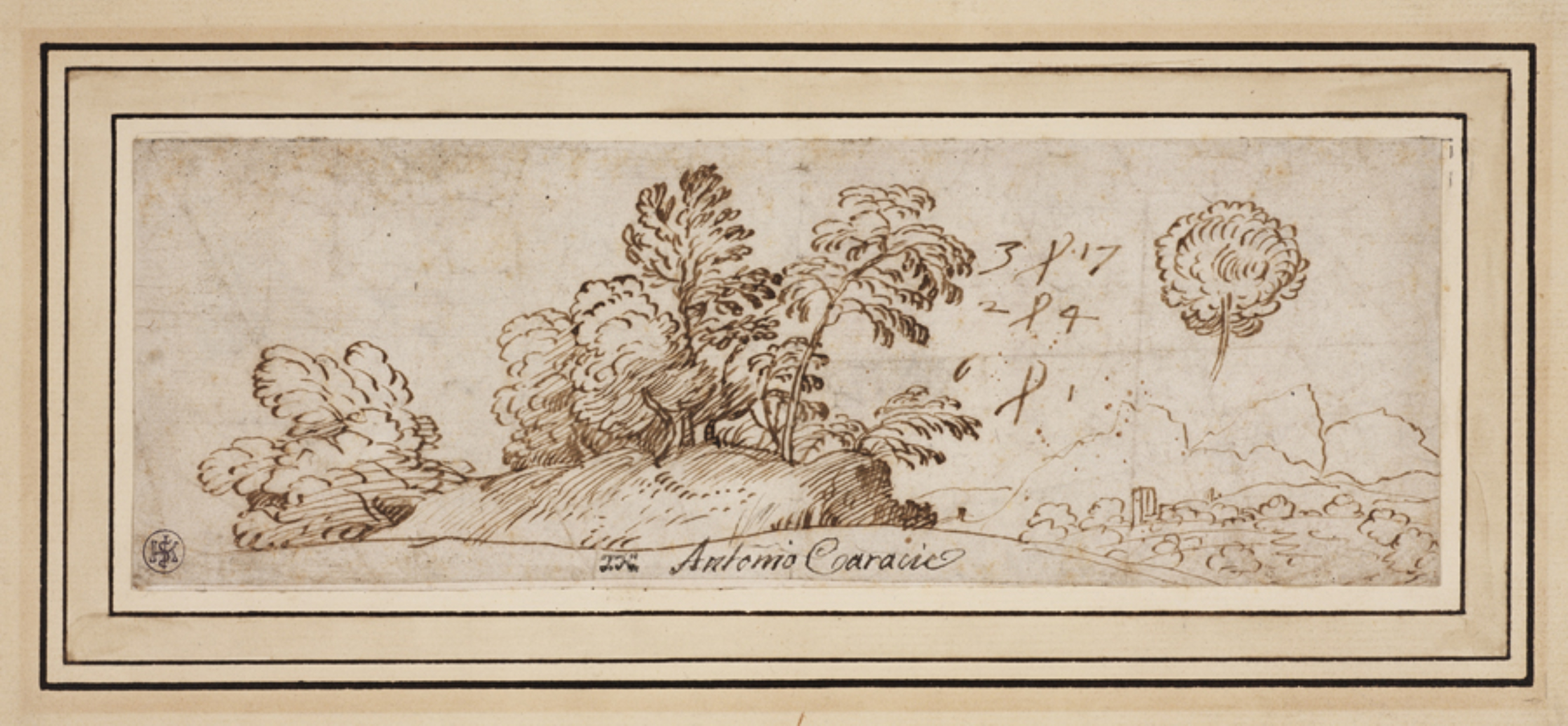
Agostino Carracci, Annibale Carracci. Italian, Agostino 1557–1602; Annibale 1560–1609. Landscape: Hillock with Trees, n.d. Pen and brown ink on cream laid paper. Purchased. Photography by Petegorsky/Gipe. SC 1955.30.
Label written by Maggie Hoot, class of 2016:
The Carracci family of artists reformed art in late sixteenth-century Italy, moving from the sterility of Mannerism to the drama of the Baroque, emphasizing drawing from nature and living subjects. While this landscape is surely from the Carracci dynasty, it is highly debatable which family member made this small sketch. A past collector attributed it to “Antonio Caracie” (as inscribed), but most scholars believe it to be by Antonio’s father, Agostino, or his uncle Annibale. Drawings representing trees by both of these artists are featured in the exhibition Drawn to Excellence downstairs and provide an intriguing comparison and foundation for this work’s origins.